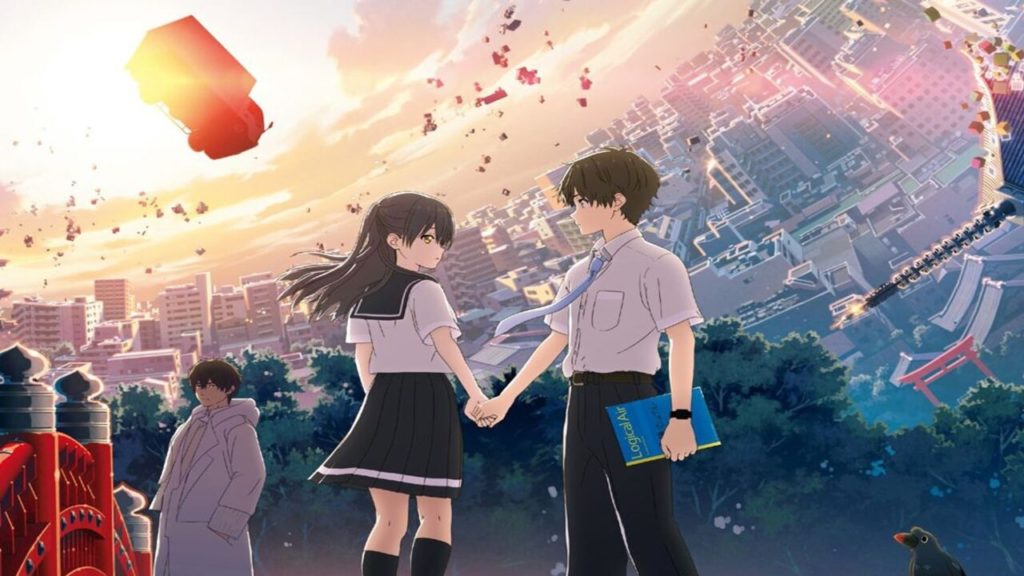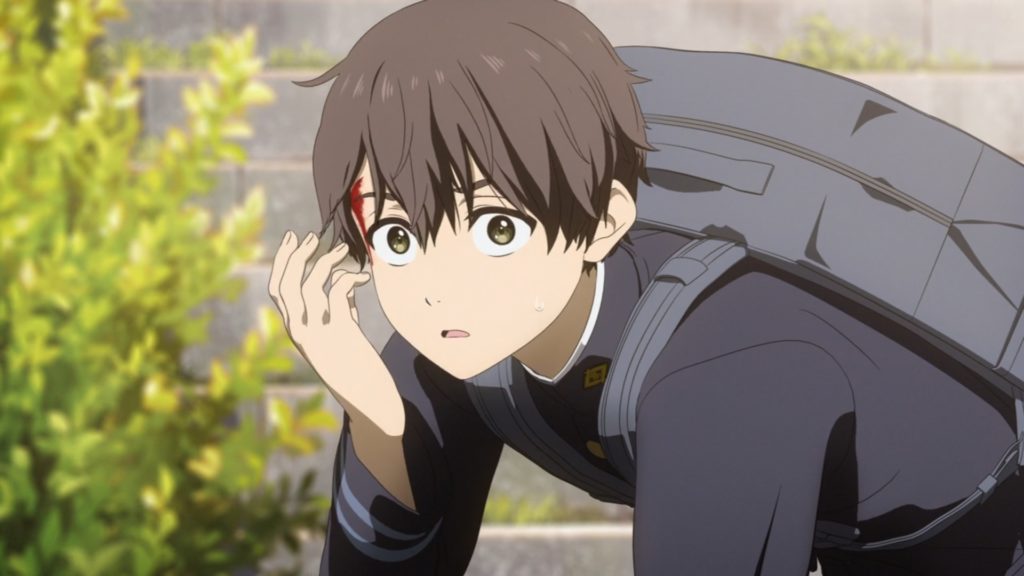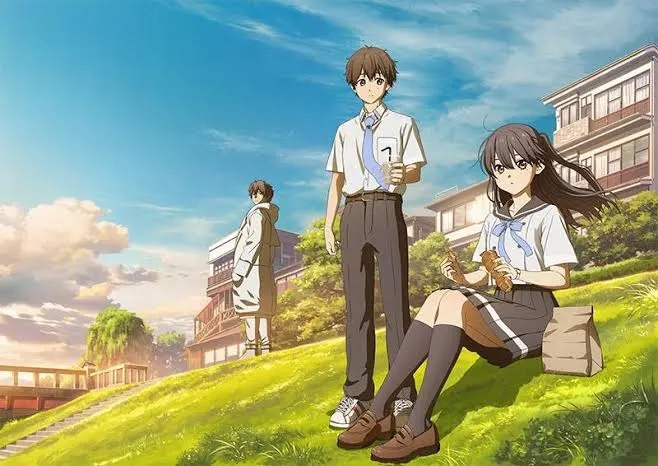Hello World
March 8, 2023 · 0 comments
By Jonathan Clements.

Kyoto teenager Naomi Katagaki’s world is invaded by a wholly unexpected arrival – an avatar of his older self, transported from a garish, rainbow coloured other realm to the year 2027, a man on a mission to save a girl’s life. For Naomi’s classmate Ruri is fated to suffer a terrible accident, and the elder Naomi is here to stop it happening. For that, he will require the assistance of his younger self, an intensely shy, timid boy who needs a crash-course in how to talk to girls and be a hero.
Like the digital environment it foretells, Hello World cunningly employs modern technology in its own creation. The film was shot in 3D computer graphics, rendered to appear as if it were drawn on 2D cels, and thereby allowing its sudden invasions of vertiginous action or effects to leap out seamlessly from the everyday world. Such effects are most obvious in the scenes of augmented reality, but viewers can also look out for the moments when they are employed in subtle, mundane moments, tracking shots of normal life.
“It’s 3D but it isn’t,” laughed director Tomohiko Ito in an interview with Akiba Soken. “That’s why it’s so rewarding. I hadn’t given much thought to the 3D industry, but I can’t compete with America, which is far ahead of us in 3DCG. Then I wondered if there was a way for Japanese CG to find a unique position for itself. I thought a ‘cel look’ [i.e. toon-shading] was the answer.”

Shortly before the film’s release, screenwriter Mado Nozaki put on a playfully meta performance for Animage magazine, pretending to have jumped back in time from a fortnight in the future to interview himself about the film’s success. In the process, he credited both Ito the director and the film’s producer, Your Name’s Katsuhiro Takei, for the exhaustive planning meetings that hashed out the film’s plot and direction. “By the time we got to the scripting stage, I felt that it was an industry at work, trying to assemble everybody’s input into a coherent whole. But of course, narrowing it down made life easier, the plotting at the planning meeting was so thorough that I never found myself getting lost and wondering what I should do next. The skeleton was all there.”
Naomi Katagaki is pegged from the opening reel as a dreamer and a bookworm. It’s this, however, which kicks off the plot of the film, since his library book is stolen by a three-legged crow (a yatagarasu), itself a reference to the mythical animal thought to herald the intervention of divine beings in human affairs.
Divine? Well, certainly a visitor from what we might call a higher plane. As we soon discover, Naomi’s world is itself a construct, a singularity that represents the successful conclusion of all the virtual-reality projects we’ve seen going on around his city. Kyoto has been successfully digitised; 2027 has been ingested to such a degree that it can be run in Naomi’s own future as a simulation indistinguishable from the real world itself. In effect, his whole world has been carefully saved and archived, which is good news for his future self, because Ruri Ichigyo, the girl he fancies, is fated to be put in a life-threatening coma in just a few weeks.

Mado Nozaki’s storyline, however, has some surprises lying in wait. Although he presents us with a standard save-the-girl narrative, he begins to gently nudge the viewer about the questions this might raise. Save the girl from what? Save the girl for whose benefit? As becomes abundantly clear from the boys’ arguments about Ruri, the elder Naomi’s memories of her may be flawed. For him she is a cherished love; for his younger self, a fearsome stranger, admittedly pretty but demonstrably “not his type.” Nozaki’s script delights in their very differing perspectives on the same girl – either the elder Naomi has got a whole bunch of things wrong, or the younger Naomi is going to experience a series of life-changing alterations to his attitude and interests over the next three months. He’s a teenager; it’s not like that’s not also possible.
“Right from the start,” Nozaki told himself in Animage, “we had the idea of three selves in different timelines, and one person loved by two others. When it came to Naomi, I wanted the audience to empathise with him, to say to themselves: that’s the sort of stuff I worried about when I was sixteen.”
In Nozaki’s hands, the story of a pure-hearted protagonist, earnestly trying to save his love interest’s life, becomes a duel between two rivals, both of whom believe that they are entitled to Ruri’s attention. The elder Naomi is utterly convinced that he is here to “manipulate the past”, although someone more versed in philosophy might have pointed him at a more Daoist solution, that if he just stayed away from Ruri altogether, she would never be waiting for him under a tree in a storm, and would hence never be injured. In a situation common to many a time paradox story, the elder Naomi’s very presence helps create the conditions that he is trying to avoid; but in Hello World, he has a reason… a sinister purpose for doing so.
But screenwriter Nozaki still has plenty of twists up his sleeve, including a finale that must have been the subject of considerable debate among the production team. One imagines that a bold production might have considered running it after the closing credits, Marvel-style, but since the credits last for five minutes, it was probably a step too far. Wisely, the end of the film comes where it should, tying everything up in sync with Nozaki’s novel: “The vast empty pages of a new world awaited his next line.”
Or does it…? Because the spin-offs continued, including a Hello World manga, a Hello World treasure hunt that required players to obtain clues at real-world Japanese bookstores, and an online e-book, Into the Distance. In it, Mado Nozaki revisits his characters one last time, to tell the story of their later activities, linking together the still images that run over the movie’s credits. Fittingly for a tale about multiple realities, its story flies off in several directions both during and after the film.
Jonathan Clements is the author of Anime: A History. Hello World is available from Anime Limited.
Leave a Reply